Story Content
Sac State students document complex history of Sutter's Fort through photography project
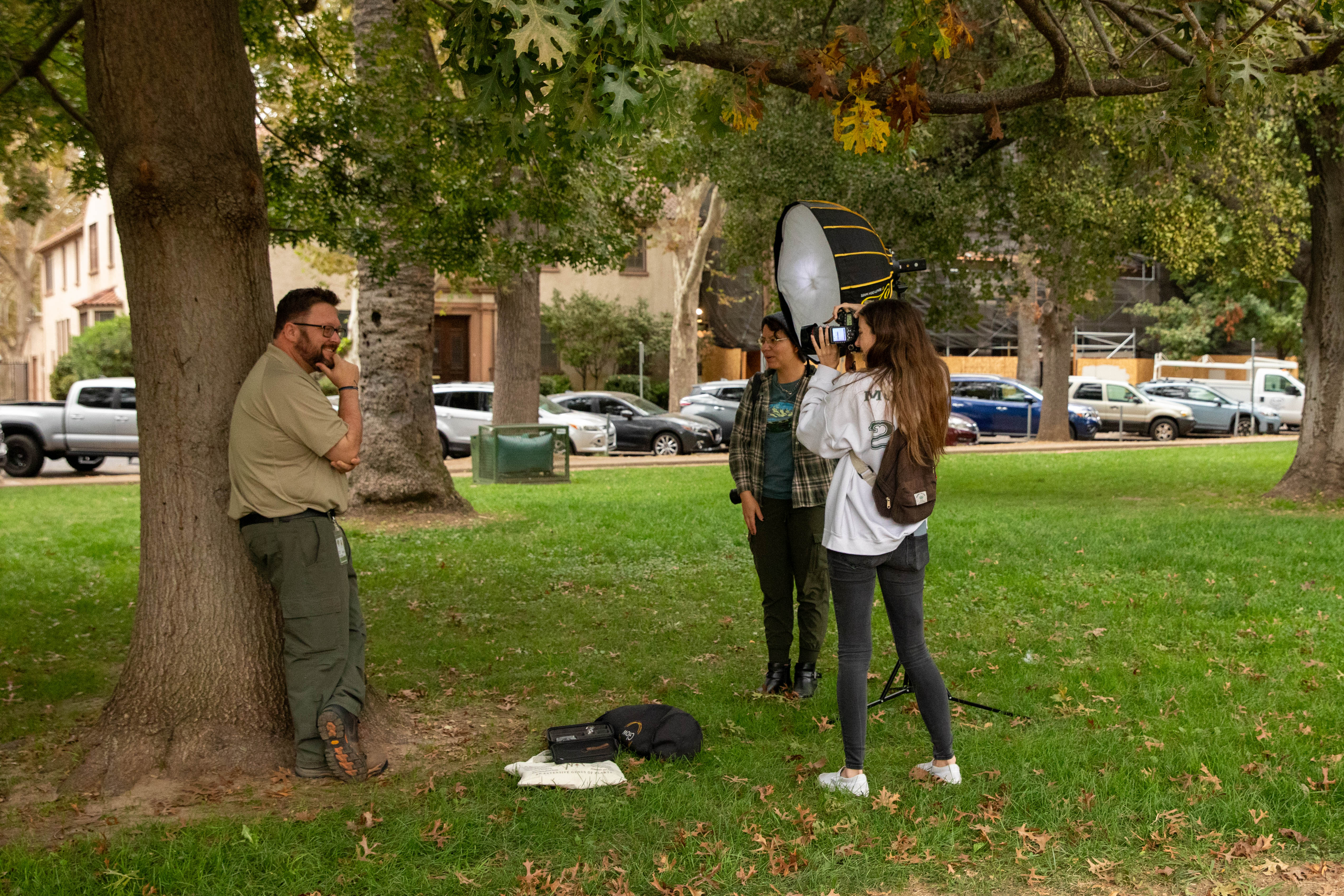
November 25, 2024
Sutter’s Fort is a contradiction. Its adobe façade doesn’t quite fit the surrounding modern Midtown Sacramento neighborhood, as it serves as an example of the pioneer spirit and the brutal oppression those pioneers wrought.
The landmark on L Street is one of the city’s most visible and also one of its most misunderstood.
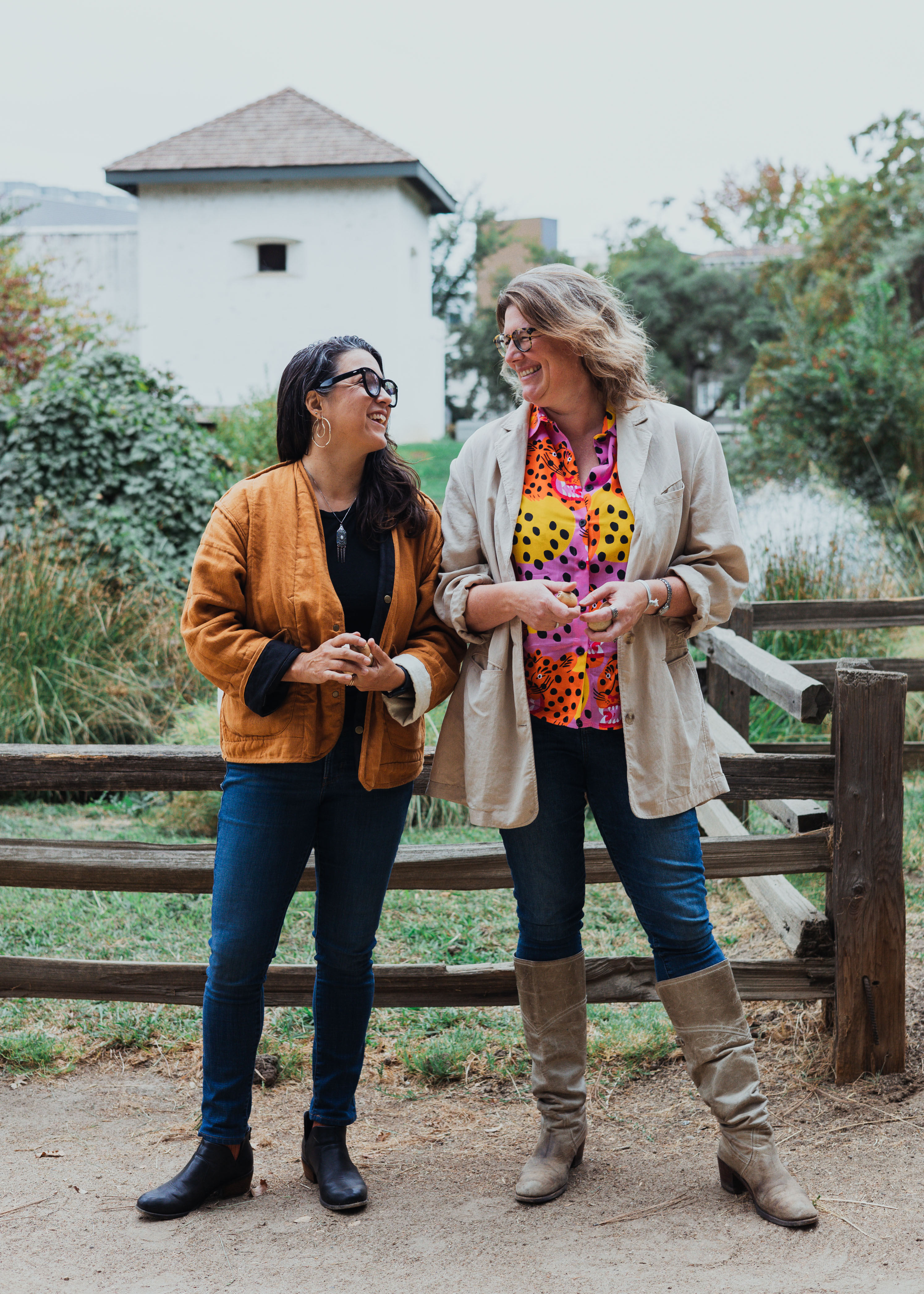
It is, in essence, the perfect place for the latest iteration of Sacramento State Assistant Professor of Photography and Social Practice Eliza Gregory’s ongoing photography project [Placeholder], which explores the disconnect between people and the places they inhabit.
“Ruptured relationships to land mean that we, as a society, both individually and collectively, have some kind of rupture or break between ourselves and the land we live on,” Gregory said. “The site of Sutter’s Fort and the State Indian Museum has this power, this import, this heaviness about it, because it’s this moment of rupture for a lot of people, both symbolically and literally.”
This most recent part of the project, called [Placeholder: Swallowtail], continues something that is also very important to Gregory: the professional and creative development of the next generation of photographers.
Students in Gregory’s senior capstone course, which is a graduation requirement, have spent the fall semester learning about the site and its history while capturing images of the people, flora, fauna and other objects that interact with the space.
Their work is on display at two concurrent art exhibitions, one at the Verge Center for the Arts and the other at the State Indian Museum, both taking place through Dec. 8.
Built in the mid-19th century, Sutter’s Fort anchored an agricultural and trade colony in what was then part of Mexico and was the final destination for many westward American pioneers. Though an important part of California history, the fort also saw the enslavement or near-enslavement of the local Native American population, who were brutally mistreated by founder John Sutter, and the forced removal of Native people from their traditional lands.
Today, both the fort and the adjacent State Indian Museum are operated by the California State Parks system. Work is underway to update exhibits, programs and educational materials to reflect an honest retelling of the site’s history that includes the perspectives and experiences of Indigenous peoples.
Central to the work of Gregory and her students during this project was the involvement of three Native consultants, who were among the first people the students interacted with at the site, and the Shingle Springs Band of Miwok Indians, who gave presentations on tribal ecological knowledge and the site’s history.
“As soon as you start to think about it, the reality of more than one narrative emerges, especially colonial and colonized narratives,” she said. “Those are all mixed up together right from the beginning. You have to address them.”
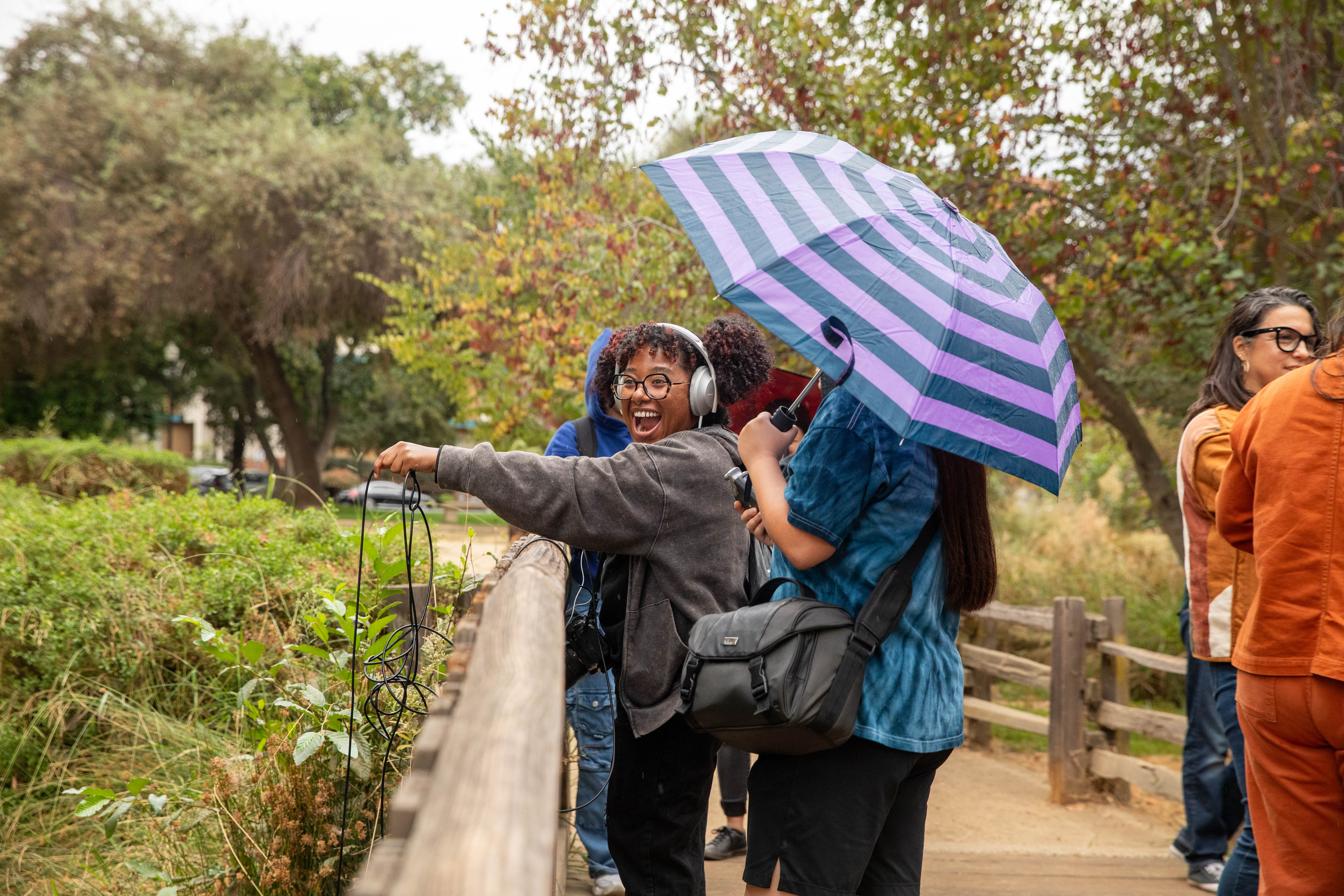
Though [Placeholder] is Gregory’s own ongoing work, the involvement of students has always been key. The project, she says, helps students gain the skills of a professional working with clients. Students learn to be curious about the world around them, work within design constraints, showcase their work to an audience and receive feedback.
“Photography is a way of showing other people what you see,” she said. “It’s a way of making the world hold still so you can look at it a little longer, or look at it at a different scale, or look at it and see different details than you can when things are not flattened.”
This is the third year Gregory has involved students in the project. Last year, they photographed various locations in the Central Valley. This year, in part to open the project to a full course of students, Gregory chose a single, more easily accessible location.
Students’ activities have included exploring the fort and the adjacent State Indian Museum, researching the museum’s artifacts and archives, and photographing what they see on site. They have learned about both the Indigenous and colonial history of the site, as well as its natural elements, such as trees, plants and animals.
The photography varies, from images of a single leaf to wide shots of the landscape to pictures of those visiting or passing through the park or even of other students as they work on the project. The only place the students could not photograph was inside the State Indian Museum due to sensitivities surrounding its cultural items.
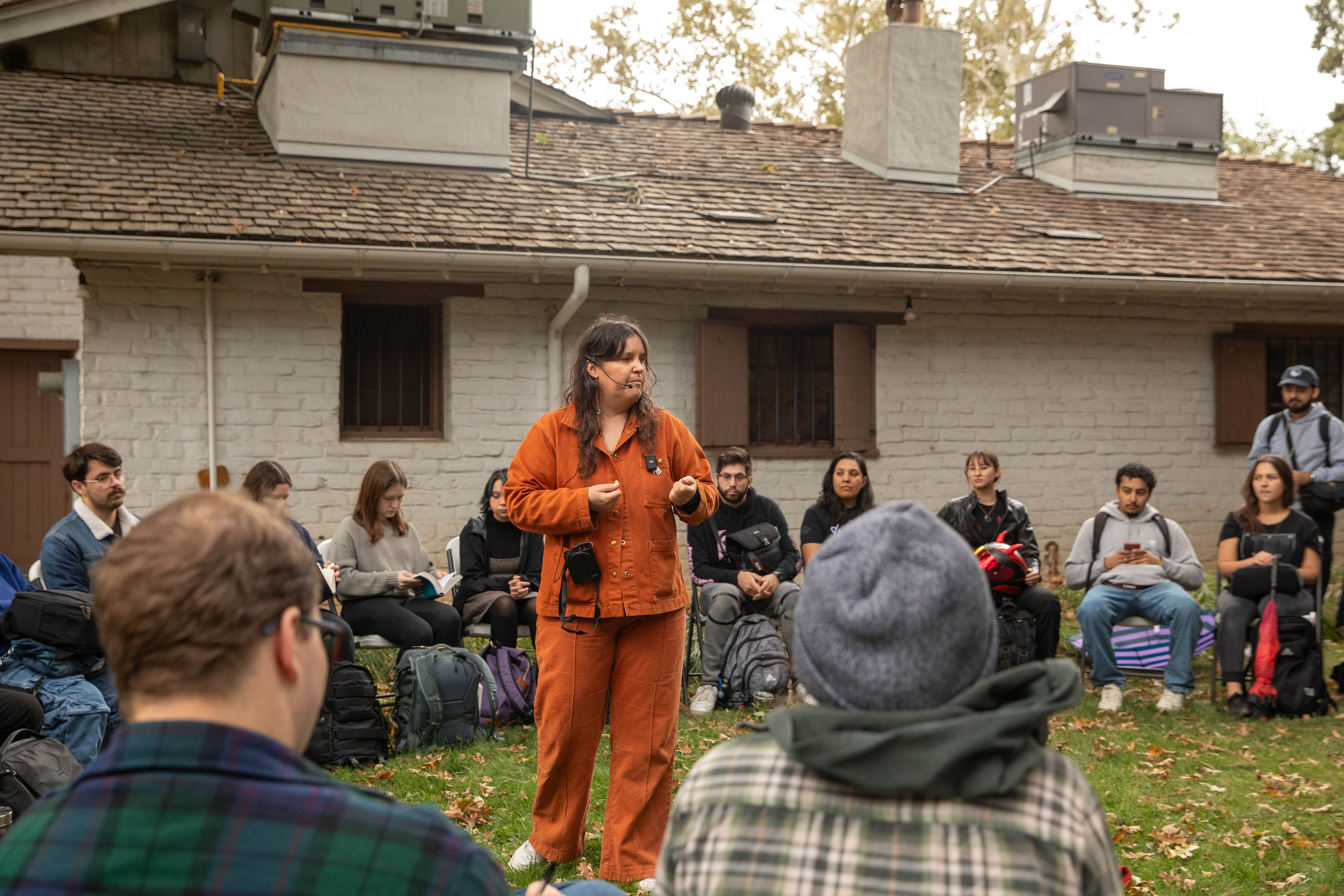
The goal was to capture a wide sense of what the place is and merge that with their research to develop an exhibition that explores people’s overall relationship to the site. A picture of an oak tree, for example, helps tell a story about how important its acorns were to the Native Americans who lived there prior to colonization as well as the individuals who carry on those traditions today.
“We’ve been redefining what our relationship to land is, what it means to live in a place and our responsibility and understanding,” said Curtis Filter, a senior Photography major. “Is there really a separation between humans and nature? And where is that line? Is there a line?”
Another senior Photography major Sabrina Achiro hopes to start a career in product photography and advertising following graduation. That’s a far cry from the natural and journalistic photographs she took for the project, but she said the skills she has gained will be useful regardless.
“Researching is going to be my biggest takeaway but also finding meaning in what I’m creating and using it as active storytelling,” Achiro said.
Building bridges to professional practice is a major part of Gregory’s focus. In addition to the students in her class, two alumni also participated. One was hired by the State Parks to develop a documentary about the project, and Gregory invited another to document the installations and opening receptions.
“I feel it’s so profoundly important that my students feel empowered,” she said, “that they feel a sense of positive entitlement to project their own voices, feelings and perspectives to audiences.”
The [Placeholder: Swallowtail] project is funded through a grant from the California State Parks. For details about the ongoing exhibition, visit the websites for Verge Center for the Arts and Art in Parks. Free, public closing receptions will be held from 5-7 p.m. Dec. 7.
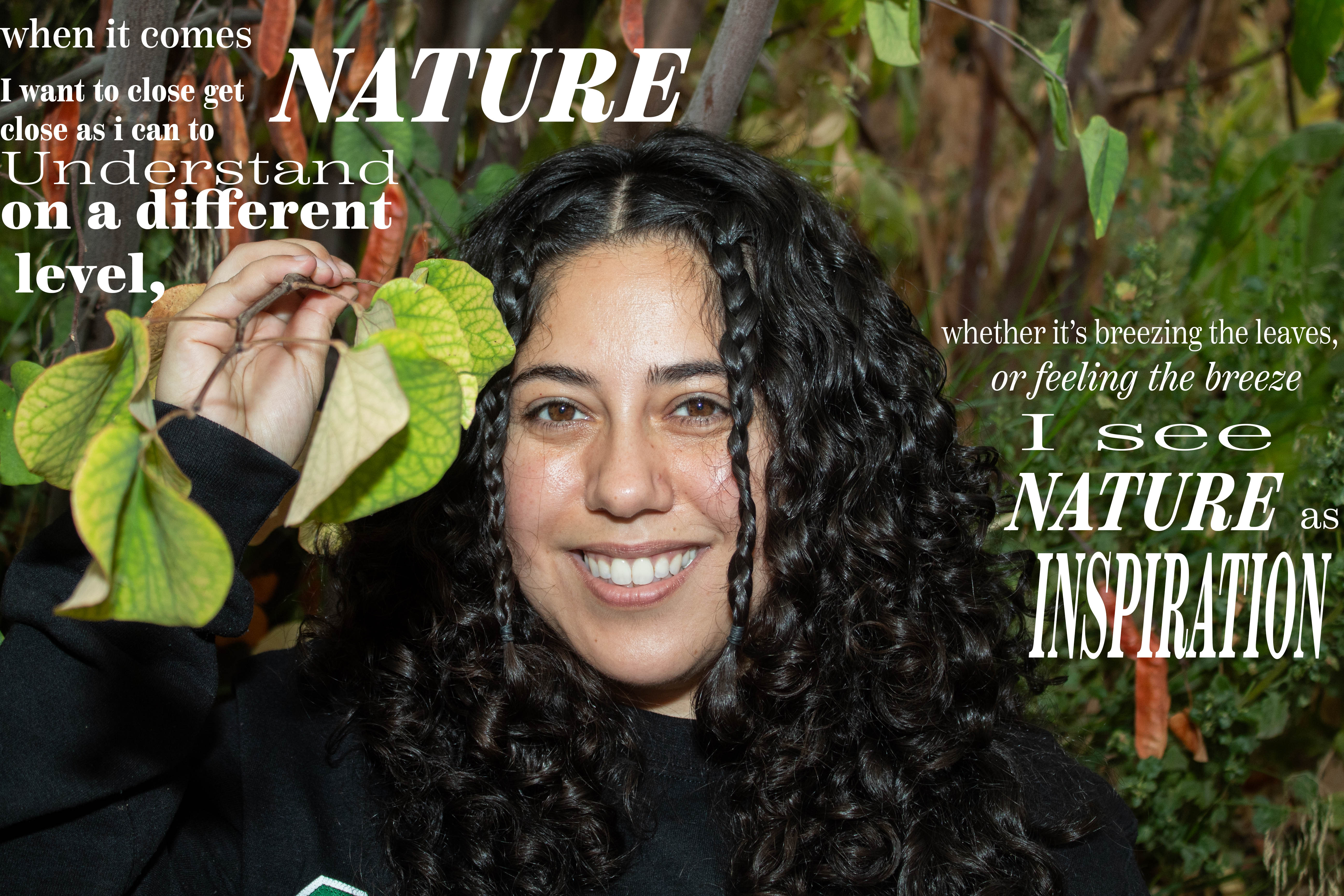
Media Resources
Faculty/Staff Resources
Looking for a Faculty Expert?
Contact University Communications
(916) 217-8366
communications@csus.edu


